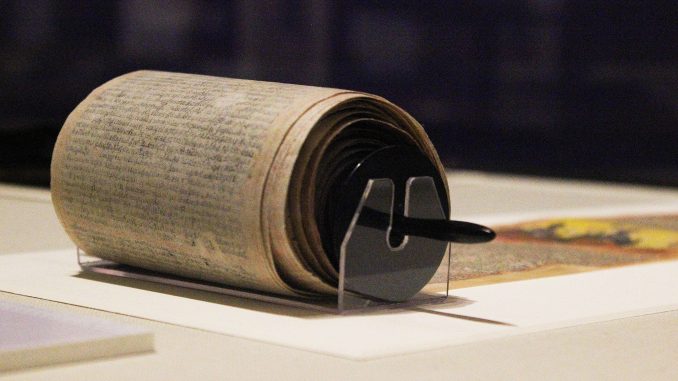
A 200-year-old, 64-foot Hindu scroll lies in a display case on the third floor of the Free Library. Beside the scroll sits a handmade Quran—enclosed in a cover that took six painstaking months to create.
These rare texts are just two of the pieces in the Free Library of Philadelphia’s new exhibition, “Sacred Stories: The World’s Religious Traditions,” which opened in late August. The display showcases artifacts from five of the world’s major religions: Hinduism, Judaism, Buddhism, Christianity and Islam, including a copy of Martin Luther’s first German New Testament and the first translation of the Quran into English.
The exhibition runs through Jan. 30 and offers extended hours during the World Meeting of Families. With the influx of visitors coming to Center City and surrounding areas, the library wanted to take advantage of the crowds and enhance tourists’ experience in Philadelphia by exposing them to stories of devotion and worship.
For Caitlin Goodman, curator of the rare book department at the Free Library, it was important the exhibit included all five religions, instead of focusing solely on Catholicism.
“Religious experience, in all its variety, is a prototypical human experience,” Goodman said. “The exhibition illuminates thematic similarities found in all five of the world’s major religions. Spotlighting materials from different religions emphasizes the fundamentally human practices of religious experience.”
“Sacred Stories” showcases texts dating back to the 13th century, displaying scrolls, bibles and personal devotion books—like Mark Twain’s copy of the New Testament and William Penn’s personal bible.
“The books, scroll and fragments on display narrate a journey through 1,000 years of history,” said Janine Pollock, head of the rare book department at the Free Library. “They tell stories about the creation of the world and its workings, building a community of narrative around the sacred word.”
The exhibit draws interest for its inclusiveness and visual appeal. Beautifully illuminated manuscripts line the display cases, with intricate texts and impossibly complex designs, which took months to create by hand. Vibrant pictorials tell stories with colorful pictures, recounting tales of gods and goddesses, world creations and holy figures.
“The thought actually crossed my mind, that if the Pope were to come here and see this display, he would really embrace it,” Pollock said.
Emily Thomas can be reached at emily.ralsten.thomas@temple.edu.



Be the first to comment